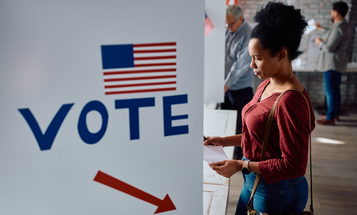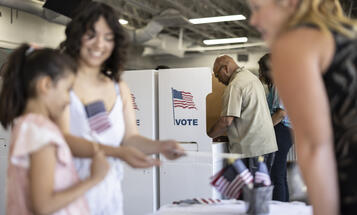
How to Fight Oligarchy: Lessons From The States
Does the inequality of a state affect the inequality of representation?
Patrick Flavin is an assistant professor in the Department of Political Science at Baylor University. He is also doing pioneering work in the area of policy representation at the state level. You can find a discussion of his work here. I talked with him about his studies and what they tell us about fixing our democracy.
Sean McElwee: What exactly did you do? You have a rank of states by political equality of representation, what does that mean?
Patrick Flavin: All the papers use a pretty similar method. It basically measures how strongly the relationship is between the higher your income is and the likelihood that your ideology will be well-represented by policy. So think of two people and we had a number line from a one to a ten and the state generally passed policy measures that are a six and someone who is at the number line at the six would be well represented, someone with a one would not be well represented. So the table ranks how much income correlates with that. In Mississippi there is a strong relationship between your income and your representation, in North Dakota that relationship is not strong.
S: Does the inequality of a state affect the inequality of representation?
P: Usually states with higher levels of economic inequality also tend to be the most politically unequal. States with a big divide in rich and poor in income also tend to have a bigger divide in political representation. It’s not a one-to-one relationship or a perfect correlation, but it’s a general pattern. For example, Mississippi has a fair amount of really poor people with more liberal preferences, but Mississippi tends to pass very conservative legislation.
S: You had an interesting paper on what constitutes responsiveness. For some people it’s ideological preferences and for some people it’s how much money is being brought back to the state.
P: The study of political inequality bounces between two measures. The first is opinions or ideology, which we discussed before. The second is interests. We would assume, I would argue rightly, that those at the bottom end of the spectrum would prefer more spending on public assistance and greater public spending. Surveys support that idea. I find that states that have stricter campaign finance laws pass more egalitarian policies on public assistance. That’s another way of measuring representation. There is not an agreed upon way of doing this. Martin Gilens looks at individual policies. We all tend to be finding the same thing, which is that there is unequal representation between the rich and poor.
S: But you’re the only one who has done this on the state level, which gives us a chance to see what works. What works?
P: One relationship is disclosure laws. There are three ways to regulating campaign finance. The first is ensuring that donors have to disclose who they are donating to. The second is limiting how much donors can give. The third is moving to a public financing system. The only type of policy I found with a strong relationship with my measure was disclosure requirements. I think that’s important because disclosure is something that both parties can agree on. There tends to be more agreement on the question. I also find that states the more strictly regulate lobbying and lobbyist interactions and what type of gifts they can give - those states are more egalitarian in terms of whose opinions get represented. That’s a good thing to learn for the states and possibly bring to the federal level. This policy is especially good in the wake of Citizen’s United, because in the wake of Citizen’s United individual and organizational limits allow individuals to spend independently.
S: Now what policies don’t have a strong correlation? You found, for instance, that more participation for low-income voters doesn’t have a strong effect.
P: Right. That’s depressing but it’s also consistent with what others have found. Places where the poor turn out they don’t seem to have more representation, which is a very troubling finding. The poor don’t get a whole bunch of a boost from voting. There is also research showing that minorities get less of a representational boost from turnouts than whites [Flavin refers here to the research of John Griffin and Brian Newman.]
[Interviewer’s Note: Flavin also points out that other studies find that turnout affects representation. One study specifically examined the low-income turnout, and found policy responsiveness increased with a higher low-income turnout. See this summary.]
S: Could gerrymandering and housing segregation explain the racial gap?
P: That’s probably part of the explanation. You have districts with Democratic candidates winning with 90% of the vote. It can definitely help explain racial inequality, but it can’t help with income inequality.
S: You also have a study that finds the more regulations a state has the more money that is distributed to the poor?
P: Yes. There are six policies I looked at: disclosure, limits on individuals, limits on organizations, whether there are public funds for governors, public funds for legislatures and clean elections. I gave each state a score for each year examined [1962 - 2006]. Then I compared it to what percentage of a state’s budget goes toward public welfare in general and then to cash assistance in particular.
S: To put it baldly, then, if we don’t get money out of politics, it won’t matter as much if poor people vote?
P: If poor people voted at the same rates as rich people, I’d expect they’d be better represented but at an institutional, practical recommendations level, passing laws that limit campaign finance are doable, so I focus on the laws side of things. There is evidence that these laws work.
S: Do you have any thoughts on the DISCLOSE Act?
P: I find that the stringency of disclosure requirements is statistically related to the equality of political representation across the states. Out of possible campaign finance fixes disclosure requirements seem to have the most bipartisan support, though this support is certainly not universal. It is probably the most practical/realistic area to push for reform.



